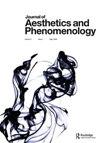Representing and Embodying a Peripheral City’s Place in the World
IF 0.2
0 PHILOSOPHY
引用次数: 0
Abstract
ABSTRACT In an increasingly globalizing world, the aesthetics of Dubai have become potentially available even for impoverished, peripheral cities such as Belgrade. With the explicit rhetoric of finally achieving a “global profile” for the city, the Serbian government has hired an Emirati company to build a “world city” in a centrally located district of Belgrade. The rationale for the development is explicitly aesthetic, and the high-rises planned articulate the globally recognizable aesthetic vocabulary of superlatives and (generic) modernity. The tall buildings suggest economic growth while forming a façade against which Belgraders play the role of extras. This paper builds on Maurice Merleau-Ponty’s notion of the body schema as well as James J. Gibson’s notion of affordances and recent contributions to architectural aesthetics that grew from it, to outline an alternative, embodied ideal of urban aesthetics. The paper presupposes that the common world is to be understood as a task to be achieved. The city, understood in its material form, as urbs, as well as in terms of social relations, as civitas, is the place where the common world can potentially be tangibly experienced. Its architecture narrates, but also affords and prohibits social change, and reversely social and political relations influence the making of the material city. The paper argues that a city’s place in the world is not a matter of gaining access to a supposedly pre-existing reality by displaying the right look, but of engaging actively in the making of the common world.代表和体现周边城市在世界上的地位
摘要在日益全球化的世界里,迪拜的美学已经成为可能,即使是像贝尔格莱德这样的贫困边缘城市。塞尔维亚政府明确表示要最终实现这座城市的“全球形象”,并聘请了一家阿联酋公司在贝尔格莱德的一个中心区建造一座“世界城市”。开发的基本原理是明确的美学,规划的高层建筑表达了全球公认的最高级和(通用)现代性的美学词汇。这些高大的建筑暗示着经济增长,同时形成了一个立面,贝尔格拉德人扮演着额外的角色。本文以莫里斯·梅洛·庞蒂的身体图式概念、詹姆斯·J·吉布森的可供性概念及其对建筑美学的最新贡献为基础,勾勒出一种另类的、具体化的城市美学理想。该文件的前提是,共同世界应被理解为一项需要实现的任务。这座城市在物质形式上被理解为城市,在社会关系方面被理解为公民,是一个可以切实体验共同世界的地方。它的建筑叙事,但也提供和禁止社会变革,并反过来影响物质城市的形成。该论文认为,一个城市在世界上的地位不是通过展示正确的外观来获得所谓的预先存在的现实,而是积极参与共同世界的创造。
本文章由计算机程序翻译,如有差异,请以英文原文为准。
求助全文
约1分钟内获得全文
求助全文

 求助内容:
求助内容: 应助结果提醒方式:
应助结果提醒方式:


